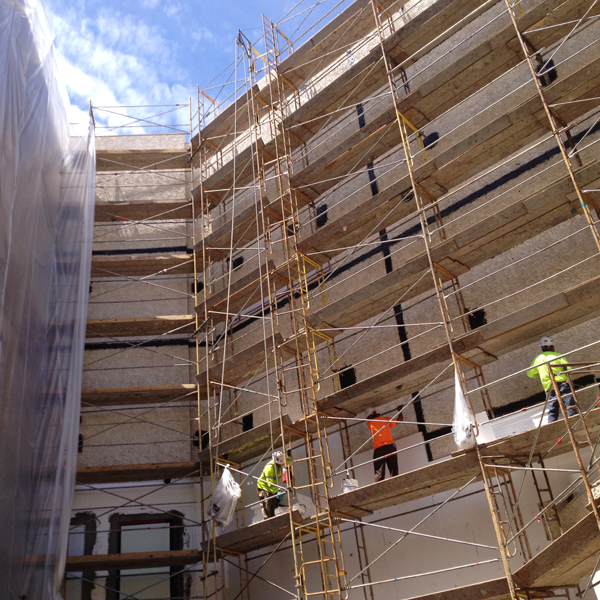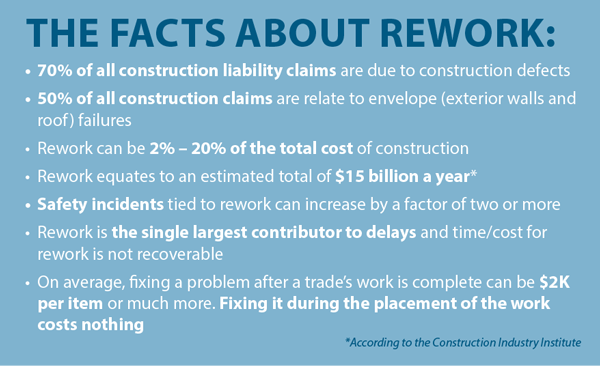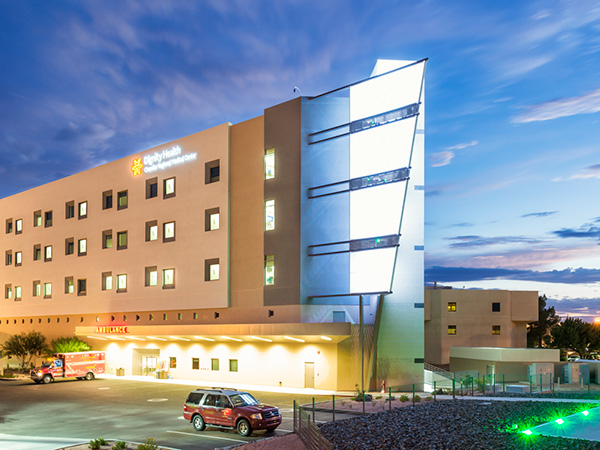We are builders, and as a byproduct of the job, we are worriers. There are many things that can go wrong on a construction project, but if you have the right people using the right tools, much of the risk can be averted. Our superintendents sleep well at night thanks to Kitchell’s relentlessly comprehensive Quality Assurance processes. Given the fact that fewer than 10 percent of commercial contractors have adopted a formal Quality Assurance program, it’s a safe bet that superintendents at other firms are walking around with circles under their eyes and consuming copious amounts of coffee.
Kitchell is an employee-owned company in business since 1950, with 80 percent of our business from repeat clients. Our keen focus on effective and measurable risk management leads to a great rate of return from our existing clients. In 2006 we formalized our processes with the establishment of a full-time Quality Assurance group to provide independent oversight and guidance to project teams.
Fewer than 10 percent of commercial contractors have adopted a formal Quality Assurance program. Fewer still measure the costs of quality due to rework. Our Quality Assurance program is based on verification and recording of the conformance of the work to the contract documents. All nonconforming work is corrected BEFORE becoming rework.
The perils of rework and how to avoid it
By its definition, construction is a high-risk endeavor. We see a strong correlation between rework occurrences and an increase in construction defect claims. Rework can also lead to higher safety incidents, pushed construction schedules, compromised quality, late delivery due to out of sequence work and billions of dollars a year in lost revenue.
In the long term, rework and added risk affects a construction company’s reputation and its ability to preserve relationships with long-term clients and attract new business.
To improve the performance of projects, rework must be greatly reduced or eliminated. This, then, reduces risk. It is imperative to identify the causes and proactively address issues beforehand. A proactive approach to building – inspect, record and correct nonconformances as the work is placed—is a hallmark of Quality Assurance.
Numbers don’t lie: We have avoided nearly $24M in rework costs since 2007
“If you can’t measure quality, it doesn’t exist,” says Bill Vandrovec, director of Kitchell’s Quality Assurance program. “We are committed to continuous measurable improvement and we capture project field performance metrics (conforming and nonconforming work), which has become not only an effective tool for ongoing work placement in the field, but also an invaluable historical data base for trending analysis, trade performance over time and project approach fine tuning for future work.”
Using real time metrics coupled with our field inspection protocol has allowed us to focus on aspects of work that have historically been shown to have a higher incident of nonconformance. For example, higher nonconforming rates on perimeter window sealant joints led to a special focus on this work, resulting in a significant decrease in testing failures and warranty call backs. Conformance trending analytics have shown that since we’ve started our Quality Assurance program, there has been a steady increase (3% per year) conforming to nonconforming items of work.
Our current conformance percentage for 2015 is 97.6%. In other words, less than 3% of work initially placed needed to be corrected BEFORE it ever became rework! We call this a provable example of continuous measurable improvement.
We love the feedback we receive regarding our Quality Assurance program. “Kitchell has a very effective way of harnessing data pertaining to vulnerabilities and nonconformances, analyzing it and proactively using that data as part of its ongoing process improvement strategy,” says James Shay, risk management executive, American Contractors Insurance Group. “So instead of ‘starting from scratch’ with each new project, they are able to capitalize on historical intelligence—at great financial benefit to owners and advantageous to the entire construction process.”
We couldn’t have said it better ourselves.


